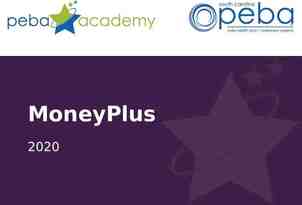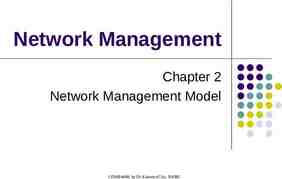TEAM BCPS Teacher Evaluation “SLO 101”
26 Slides610.59 KB
TEAM BCPS Teacher Evaluation “SLO 101”
Teachers will gain an understanding of the “Quantitative Measures” of Baltimore County Public School’s Teacher Evaluation System TEAM BCPS Outcomes
In discussing a new evaluation system, committees focused on 1. Creating an evaluation that is consistent, fair and equitable (all speaking the same language) 2. Creating an evaluation that allows for teacher growth 3. Creating an evaluation that enhances student achievement, while at the same time, allows for professional growth TEAM BCPS Evaluation Outcomes
TEAM BCPS
50 % Qualitative Measures: Charlotte Danielson Framework 50 % Quantitative Measures: SLO’s and Test Data Overall Possible Evaluation Ratings Highly Effective (distinguished and “student led”) Effective Effective Developing Ineffective *Highly Effective, Effective and Effective Developing are all seen as Satisfactory. TEAM BCPS Overview of Model
3 year cycle (Formative, Formative, Summative) 2 Formative Years 1 Summative Year -Formal and informal observation data -Professional Growth Plan evidence -Student Learning Outcome evidence *NON TENURED TEACHERS- Every year until tenure is a Summative Year TEAM BCPS Evaluation Model cont
Domain 1 Domai n2 Planning Planning and and Preparation Preparation Classroom Classroom Environment Environment Professional Professional Responsibiliti Responsibiliti es es Instruction Instruction Domain 4 Domai n3 TEAM BCPS Qualitative Measures The Danielson Model
State Testing Data Percentag e varies by teaching assignme nt Student Learning Outcome s TEAM BCPS Quantitative Measures
Non-Tested Subjects 50% 50% Qualitative Qualitative Measures Measures Charlotte Charlotte Danielson Danielson Framework Framework Domains Domains 1-4 1-4 50 50 % % Quantitative Quantitative Measures Measures 50% SLOs Grade 4 - 8 One Tested Subject Grade 4 - 8 Two Tested Subjects 50% 50% Qualitative Qualitative Measures Measures 50% 50% Qualitative Qualitative Measures Measures Charlotte Charlotte Danielson Danielson Framework Framework Domains Domains 1-4 1-4 Charlotte Charlotte Danielson Danielson Framework Framework Domains Domains 1-4 1-4 50 50 % % Quantitative Quantitative Measures Measures 50 50 % % Quantitative Quantitative Measures Measures 30% 30% SLOs SLOs 20% 20% MSA MSA Data Data 30% 30% SLOs SLOs 10% MSA Math 10% MSA Math Data Data 10% 10% MSA MSA Reading Reading Data Data TEAM BCPS Evaluation Criteria
Measure student growth by establishing formal learning goals. Applies to all teaching assignments. Can be adapted to measure individual, group, or school performance. TEAM BCPS Student Learning Outcomes “SLOs”
1. 2. 3. 4. 5. Statement of Outcome Rationale Student Population Interval of Instruction Target(s) and Evidence 6. Rationale for Targets TEAM BCPS Essential Components of SLO’s
The statement of the outcome should represent the enduring learning and/or the most important skill development expected of the students during the course TEAM BCPS Statement of Outcome
Explains why you chose this outcome and why it is an appropriate area of focus. Teachers should consider federal, state and system standards as well as system expectations for students in the course. TEAM BCPS Rationale
Identify which students the outcome addresses and from which classes. For most outcomes it should be all students in a class but there may be times a subgroup of students is an appropriate choice. TEAM BCPS Student Population
Typically one year or one semester Can be based on a unit’s time TEAM BCPS Interval of Instruction
Where will this population of students be at the end of the interval of instruction? May reflect progress of mastery of the outcome in percentages or numbers. Targets may be tiered to reflect differentiation among students. At least one source of evidence is required, but multiple sources may be used. If a common assessment exists, it should be considered as a primary source of evidence. Evidence may include pre-test and post-tests, projects and portfolios or other student work samples measured across time. TEAM BCPS Targets and Evidence
Identifies how the target was chosen How was this determined to be a rigorous target? Pre-test or baseline information that informed the decision should also be identified. TEAM BCPS Rationale for Target
Ensure quality of the SLOs Review and approve teacher SLOs Develop school wide SLOs that are included in the principal’s goals TEAM BCPS Principal’s Role
TEAM BCPS Mid Unit/Year Unit/Year Mid Evaluator and teacher review and assess progress toward targets. End of of Unit/ Unit/ End Year Year Evaluator and teacher review and assess progress toward targets. Evaluator assigns score. Teacher reviews student data and drafts more) SLO’s. Evaluator reviews and approves outcome targets. one (or and Before Before November November 15, 2012 2012 15, SLO Timeline
Align 1 SLO to Principal’s goals Review models of SLOs from *Staff Relations Intranet* site for ideas Create SLO by grade level or content teams ! n o o S g n i m Co TEAM BCPS Teacher Guidelines
Derive measures from current curriculum resources, if appropriate Create an appropriate assessment if none is available in the curriculum Format SLO according to the template provided TEAM BCPS Teacher Guidelines cont
Rubrics to assess SLO rigor Guidance documents on creating SLOs (intranet) Office of Staff Relations-Resource Teachers TEAM BCPS SLO Resources
TEAM BCPS
TEAM BCPS
TEAM BCPS Questions?
Casey Head Resource Teacher - Secondary [email protected] Samantha Yuhanick Resource Teacher - Elementary [email protected] TEAM BCPS Contacts- x2095































